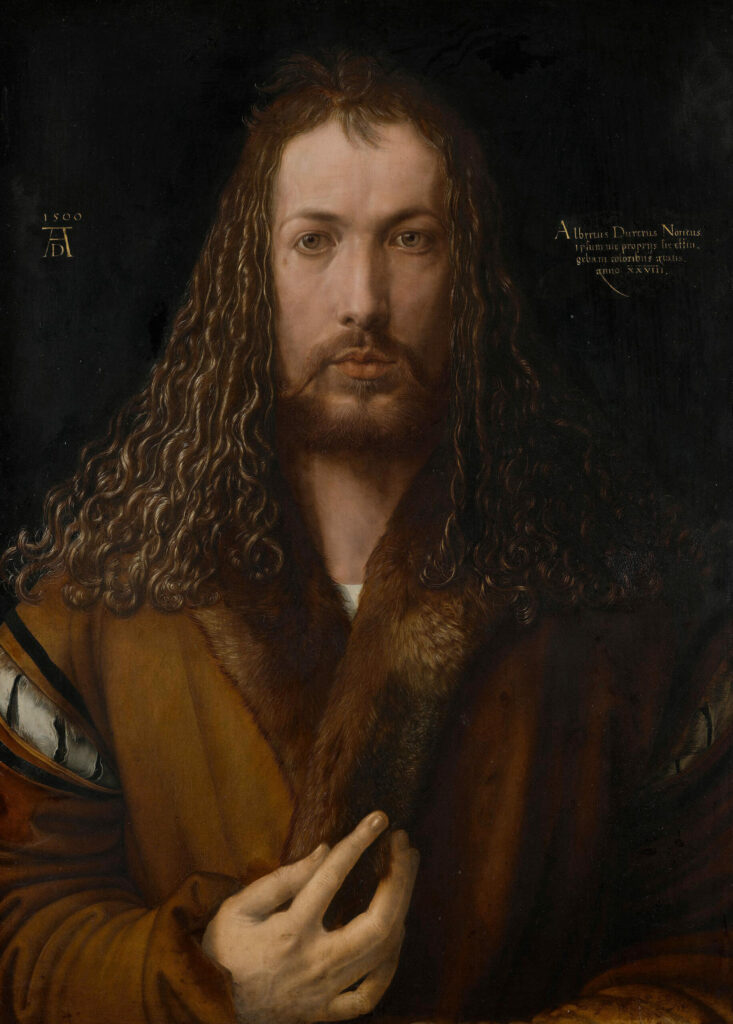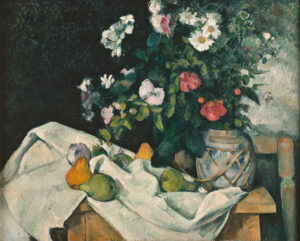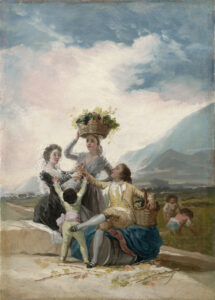
Nuremberg, 1500. Albrecht Dürer is 28 years old and about to paint the most audacious self-portrait of the Renaissance. Facing the mirror, he chooses an unprecedented posture: absolute frontality, that reserved for Christ.
A Gaze That Defies Eternity
Dürer represents himself face-on, his eyes fixed on those of the viewer. His chestnut hair undulates in perfect curls, a carefully crafted cascade framing a face with regular features. The right hand emerges from shadow, fingers delicately placed on the brown fur collar enveloping his shoulders. The intense black background brings out every detail. The technique on linden wood allows for this precision, this ability to render visible each strand of fur, each nuance of skin. The monogram “AD” and the Latin inscription “Thus I, Albrecht Dürer of Nuremberg, created myself” assert a sovereign presence.
A Revolution in Artistic Vision
By borrowing the composition of icons of Christ blessing, Dürer crosses a major symbolic boundary. In an era when the artist remains a craftsman, he claims a quasi-divine status: that of creator. This Christlike frontality is not blasphemy but humanist affirmation. The German artist proclaims that to paint is to participate in the creative act itself. This painting manifests the artist’s new status in Renaissance Europe.
Albrecht Dürer, Master of Nuremberg
Albrecht Dürer (1471-1528) revolutionizes German art through his travels in Italy and technical innovations. Painter, engraver, theorist, he masters mathematical perspective and naturalistic rendering. This self-portrait synthesizes his genius: Flemish precision and Italian ambition.
Think about it
💭 How do you perceive the modernity of this work for its time?
About this work
- Self-Portrait with Fur-Trimmed Robe
- Albrecht Dürer
- 1500
- Oil on linden wood
- 67.1 × 48.9 cm
- Alte Pinakothek, Munich
- https://www.sammlung.pinakothek.de/de/artwork/Qlx2QpQ4Xq/albrecht-duerer/selbstbildnis-im-pelzrock






